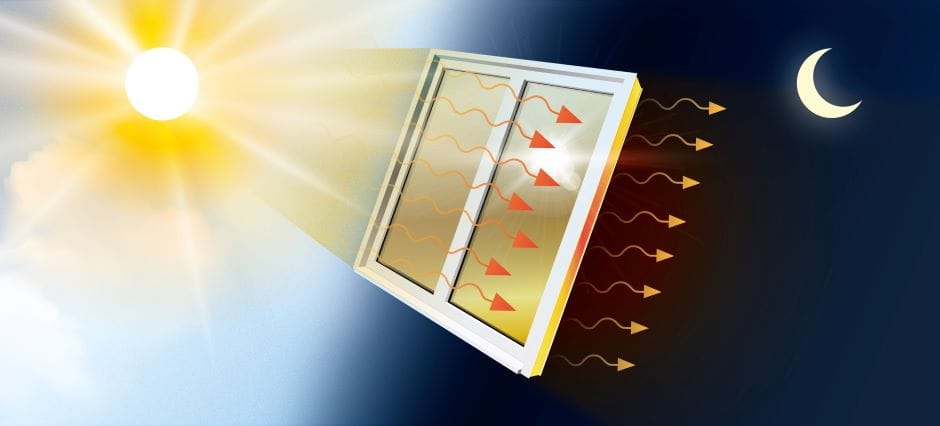
A window film with a specially designed molecule could be capable of taking the edge off the worst midday heat and instead distributing it evenly from morning to evening. The molecule has the unique ability to capture energy from the sun’s rays and release it later as heat. Image: Yen Strandqvist/Chalmers University of Technology
Nobody wants to live in a greenhouse. While large windows are pleasant to have in a house and vital in a car, on a sunny day the intensifying effect of all that glass can raise temperatures to an uncomfortable – or even dangerous – level. This can, of course, be alleviated with air-conditioning, but this consumes energy. Simply closing the blinds is another option, but that blocks the view.
The Swedish team, from Chalmers University of Technology, is trying to turn this disadvantage into an advantage. “The aim is to create a pleasant indoor environment even when the sun is at its hottest, without consuming any energy or having to shut ourselves behind blinds. Why not make the most of the energy that we get free of charge instead of trying to fight it,” said chemist Kasper Moth-Poulsen, who is leading the research.
In a paper in the journal Advanced Science, Moth-Poulsen and his colleagues explain the concept they call MOST (MOlecular Solar Thermal Storage). They previously published early research on this concept in the journal Energy and Environmental Science in October last year.
The concept is based around the properties of a molecule called norbornadiene (NBD)–quadricyclane (QC). Composed of carbon, oxygen and nitrogen, this molecule contains two benzene rings and a six-membered hexane ring with two double bonds. This ring is capable of absorbing energy, which makes it change form or isomerise into a saturated form. This is a reversible process, so when it changes back into its unsaturated state it releases the energy.
Moth-Poulsen’s team has developed a method for immobilising this molecule into a polymer film without affecting its energy-related properties. If coated onto a window, this film has a yellow-orange tint if it is not exposed to sunlight. As it captures solar energy, the tint vanishes and the film becomes colourless, and as long as the sun is shining on it, it remains in this state, continuing to capture energy and preventing the heat from penetrating the glass. At dusk, the material would start to release its stored energy, warming up and acting as a heating panel as the outside temperature drops. It’s gradually recovers its tint, and in the morning will begin to absorb energy again.
In their previous research, the team had suggested using the molecule in an energy capture system that could store the solar energy for an extended period, such as from summer to winter, and then release it gradually to heat a building throughout the colder season. Using the material as a window film would be compatible with this system, they state, and it would also have advantages even if it were used without the additional energy storage.
The team’s research is now focusing on increasing the concentration of NBD-QC in the film and finding ways to reduce the cost of the technology. “The step to applying our film is so short that it could happen very soon. We are at a very exciting stage with MOST,” said Moth-Poulsen.




Nanogenerator consumes CO2 to generate electricity
Whoopee, they've solved how to keep a light on but not a lot else.